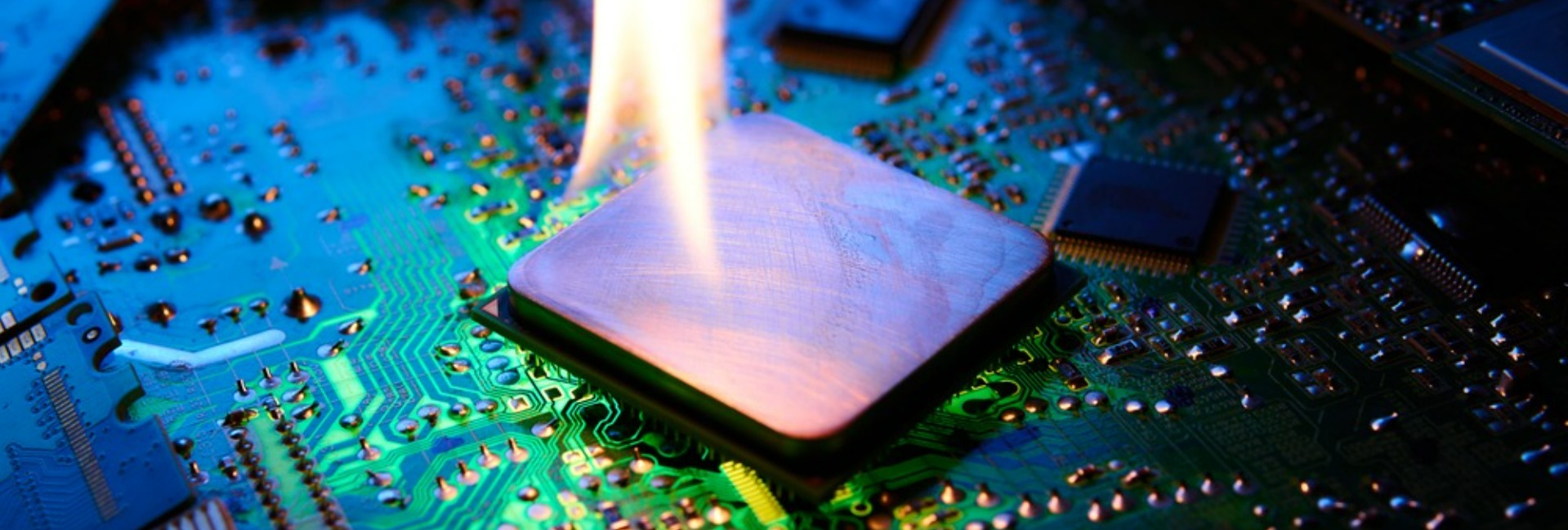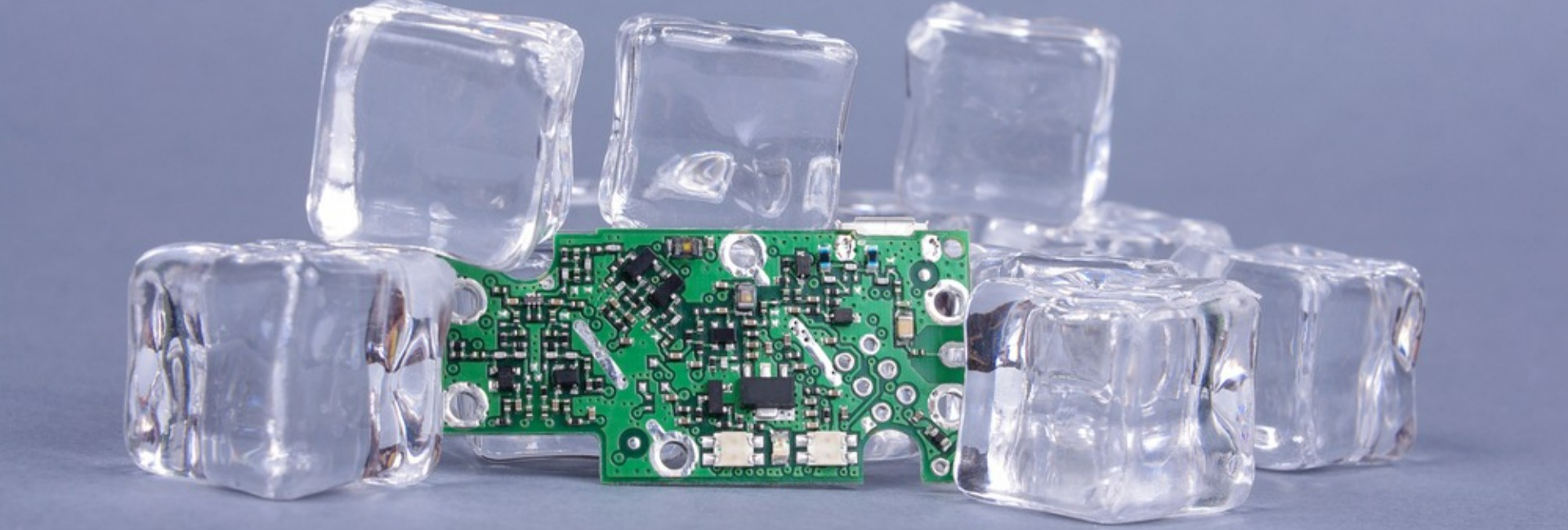In accordance with the European Union’s General Data Protection Regulation (GDPR), we are committed to safeguarding and ensuring your control over your personal data. By clicking “Accept All” you are permitting us to use cookies to enhance your browsing experience, assist us in analyzing website performance and usage, and deliver relevant marketing content. You can manage your cookie settings below. By clicking “Confirm” you are agreeing to the current settings.
Essential Guide to Thermal Management of Electronics

As electronic technology develops, the thermal management of electronics has become vital due to miniaturization and performance demands. Engineers are now challenged to dissipate greater heat from densely packed components. Moreover, rising high-power applications, including electric vehicles, have demanded more cultured thermal management.
Thus, effective thermal management of electronic devices, like active and passive cooling, augments device steadfastness and efficiency. This need is amplified as devices from consumer electronics to aerospace components operate within tighter thermal margins. It renders the thermal management of electronics essential in their design and function.
What is Thermal Management of Electronics?
In electronics, thermal management is applying technologies and methods to control the temperature of electronic systems. The process ensures efficient and harmless operation of electronic devices. While managing heat, thermal management in electronics boosts performance and product life and precludes component damage. It is necessary for compact, high-performance devices like smartphones, medical equipment, and aerospace electronics.
Heat Transfer Mechanisms in the Thermal Management of Electronics
-
Conduction: It involves direct heat transfer through materials from a hot component to a cooler one. For instance, in the thermal management of electronic devices, heat sinks made of copper or aluminum conduct heat away from processors.
-
Convection: This method uses the movement of fluid (air or liquid) to transfer heat. In electronics, forced convection with fans or blowers is standard for better cooling efficiency while moving hot air away from components.
-
Radiation: Here, heat is transferred in the form of electromagnetic waves. Although less common in the thermal management of electronics due to its lower efficiency, radiation is key where other modes are not feasible, including space applications.
Thermal Management for Electric Vehicles
The automotive sector stands out in industries adopting thermal management strategies, chiefly electric vehicles (EVs). Modifying the thermal management of electronics in EVs is necessary due to their unique challenges. It includes managing the heat generated by electric motors, battery packs, and power electronics. Unlike traditional combustion engine vehicles, EVs count on these electrical components' efficiency and prolonged existence. As a result, it makes their thermal management central for vehicle performance and care.
Maintaining Optimal Temperatures for Key Components
The necessity of keeping optimal temperatures for fundamental components in EVs must be addressed. For instance, the battery pack is the powerhouse of an EV and is sensitive to temperature fluctuations. High temperatures can accelerate battery degradation, while low temperatures can decrease its capacity to deliver power. Similarly, power electronic systems and motors are essential to the vehicle's propulsion and energy conversion. They must operate within explicit temperature ranges for efficiency and dependability.
Techniques and Innovations in Thermal Management for EVs
Active cooling methods have been employed regarding techniques and contemporary thermal management innovations for EVs. One methodology uses liquid cooling systems; coolants absorb heat from the battery cells and electronic components and transfer it to radiators. It manages the high heat loads in EVs. Besides that, advancements in thermal interface materials (TIM) and the integration of thermoelectric coolers in definite areas are being reconnoitered for the better thermal management of electronics in these vehicles.
Techniques and Advancements in Thermal Management

In the thermal management of electronics, air cooling is a traditional method that uses natural or forced air flow to remove heat. It is utilized in consumer electronics thanks to its simplicity and cost-effectiveness. Meanwhile, liquid cooling offers superior heat transfer capabilities and is used in data centers and gaming PCs. Two-phase cooling is a more radical technique that utilizes liquid and vapor phases to manage heat in aerospace and electric vehicles. On the other hand, conduction cooling is essential in compact devices where space is at a premium. Remember, early design optimization integrates these methods commendably.
Evolution of Thermal Management Systems
Historically, thermal management systems were a concern for large-scale industrial assembly and energy production applications. Nevertheless, the miniaturization of electronic devices, from smartphones to personal artificial intelligence systems, has ushered in new thermal management challenges. These devices pack more electronic and electrical components in tighter spaces to intensify the heat generated. Undoubtedly, this changeover from large-format applications to miniaturized devices highlights the embryonic nature of thermal management of electronics with more refined and bespoke tactics for heat dissipation.
Impact of Simulation Tools on Thermal Management Strategies
The introduction of simulation tools has updated thermal management strategies. The fact is that simulation enables early-stage analysis of heat management. Consequently, engineers can predict and moderate impending thermal concerns before physical prototyping. Tools like SimScale's Conjugate Heat Transfer v2.0 have heightened the accuracy of simulations for real-world insights into thermal behavior within electronic systems. It permits designers to experiment with component placements, heat sink designs, and cooling configurations to regulate the thermal management of electronics cost-effectively and timely.
Innovations in Materials and Technologies
Materials are critical in the thermal management of electronics. For example, silicones are unique for their adaptability and temperature resistance, handling from -60°C to 200°C and even up to 600°C in specialized formulations. It is appropriate for applications from sensitive sensors to EV batteries. Likewise, acrylic resins are known for their basic heat management and moisture protection while offering elasticity and dielectric insulation. However, they falter in extreme conditions. Epoxy resins protect against moisture, abrasives, and chemicals and provide essential heat insulation for physical protection in potting applications.
Innovative Technologies
Innovative technologies like computational fluid dynamics (CFD) have also modernized the thermal management of electronics. CFD allows for early-stage simulation of heat management with foundational equations like Navier-Stokes, which were developed in 1821. Up-to-date CFD tools offer better algorithms for more accurate simulations. Essentially, they empower engineers to model real physical problems with smart default values, including open boundaries for natural convection. Without a doubt, it accelerates the design process and elevates thermal management solutions for more reliable electronic systems.
Challenges in Thermal Management of Electronics
The following are the challenges in the thermal management of electronics:
-
Heat Spreading: Efficient heat spreading manages high operating temperatures in compact electronic systems. Note that copper and graphite are among the elements in this process that can channel heat away from concentrated heat sources.
-
Convection Limitation: Overcoming convection limitations involves increasing air or liquid flow around heat-generating components. It refers to a challenge in thickly packed electronics; space for adequate airflow is restricted.
-
High Ambient Temperatures: Electronic systems have difficulties operating in areas with high ambient temperatures. Accordingly, to attain acceptable operating temperatures, they require unconventional cooling solutions.
A multifaceted approach tackles these challenges in the thermal management of electronics. High thermal conductivity materials like copper and composites are central for spreading heat. These materials can transfer heat away from hotspots. Furthermore, state-of-the-art designs that maximize airflow, including optimized fin arrangements in heat sinks or liquid cooling systems, address convection limitations. Active cooling technologies like efficient coolers or vapor compression systems offer solutions for high ambient temperatures.
T-Global's Range of Thermal Management Solutions
Finally, T-Global Technology concentrates on the thermal management of electronics with solutions like fully cured, silicone-free, thermally conductive putties and unique products such as ceramic heat sinks and phase change materials. We integrate thermal management solutions early in the product design stage, which helps improve device efficacy and performance. Our approach addresses time-to-market challenges and demand for compact, unfailing electronics. For more information, visit our website.
